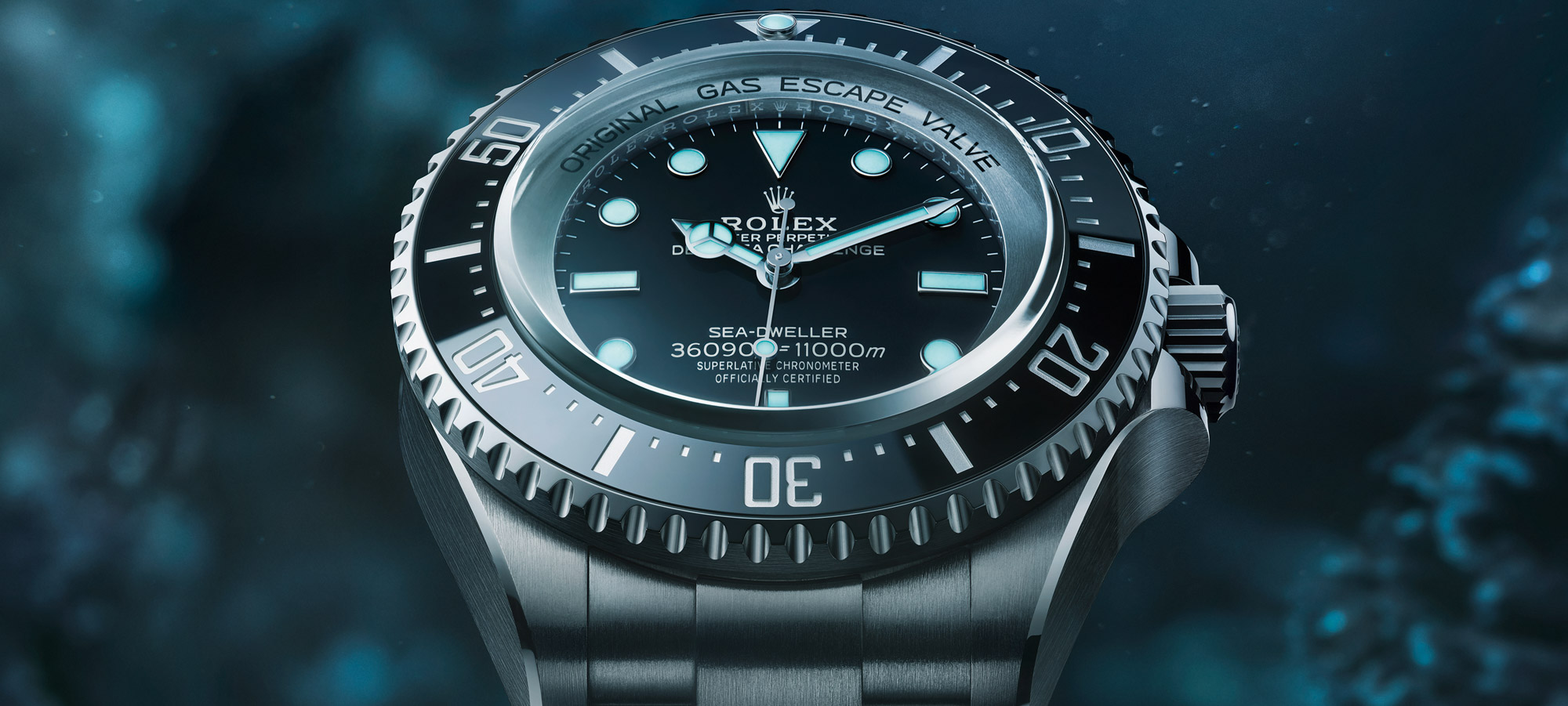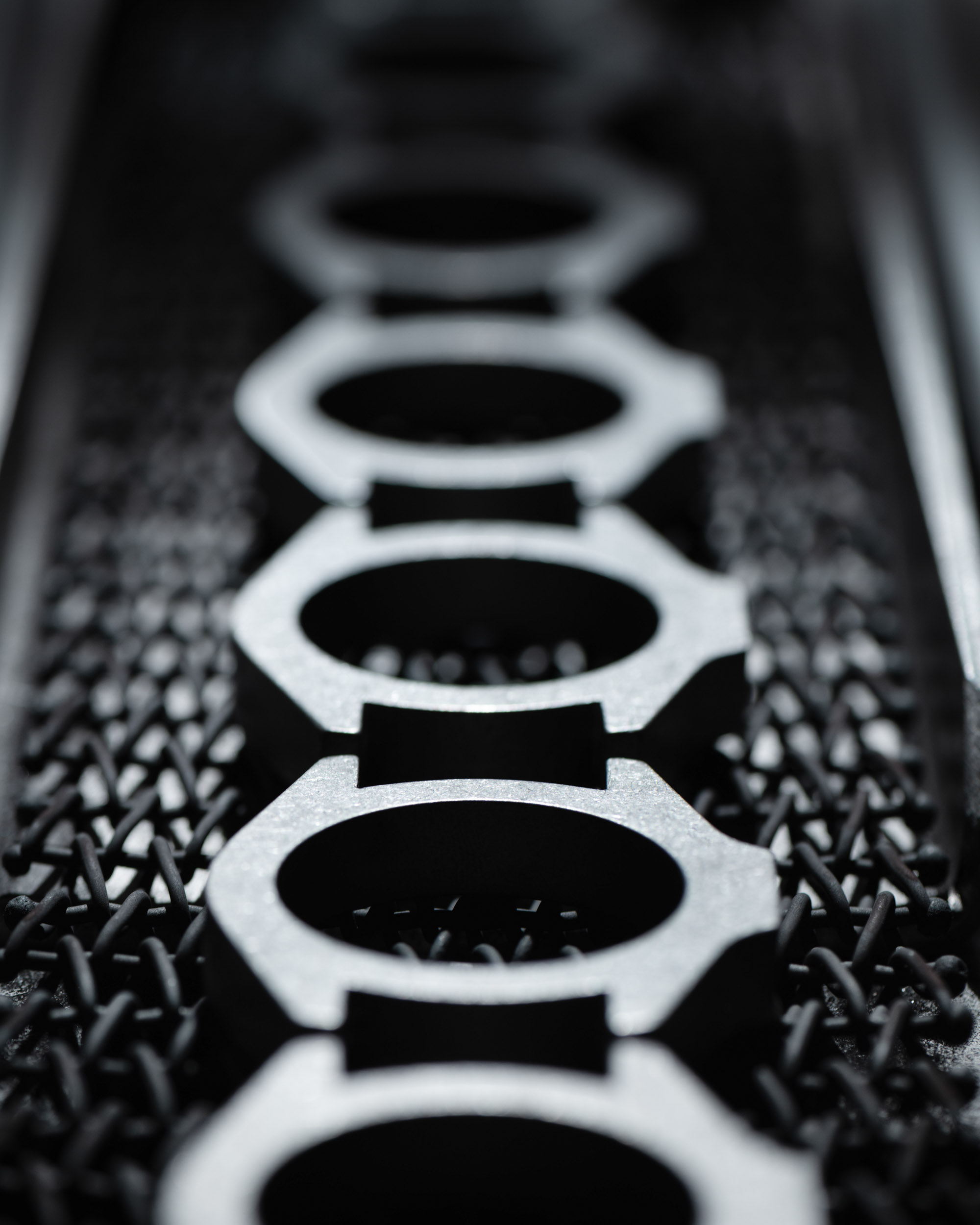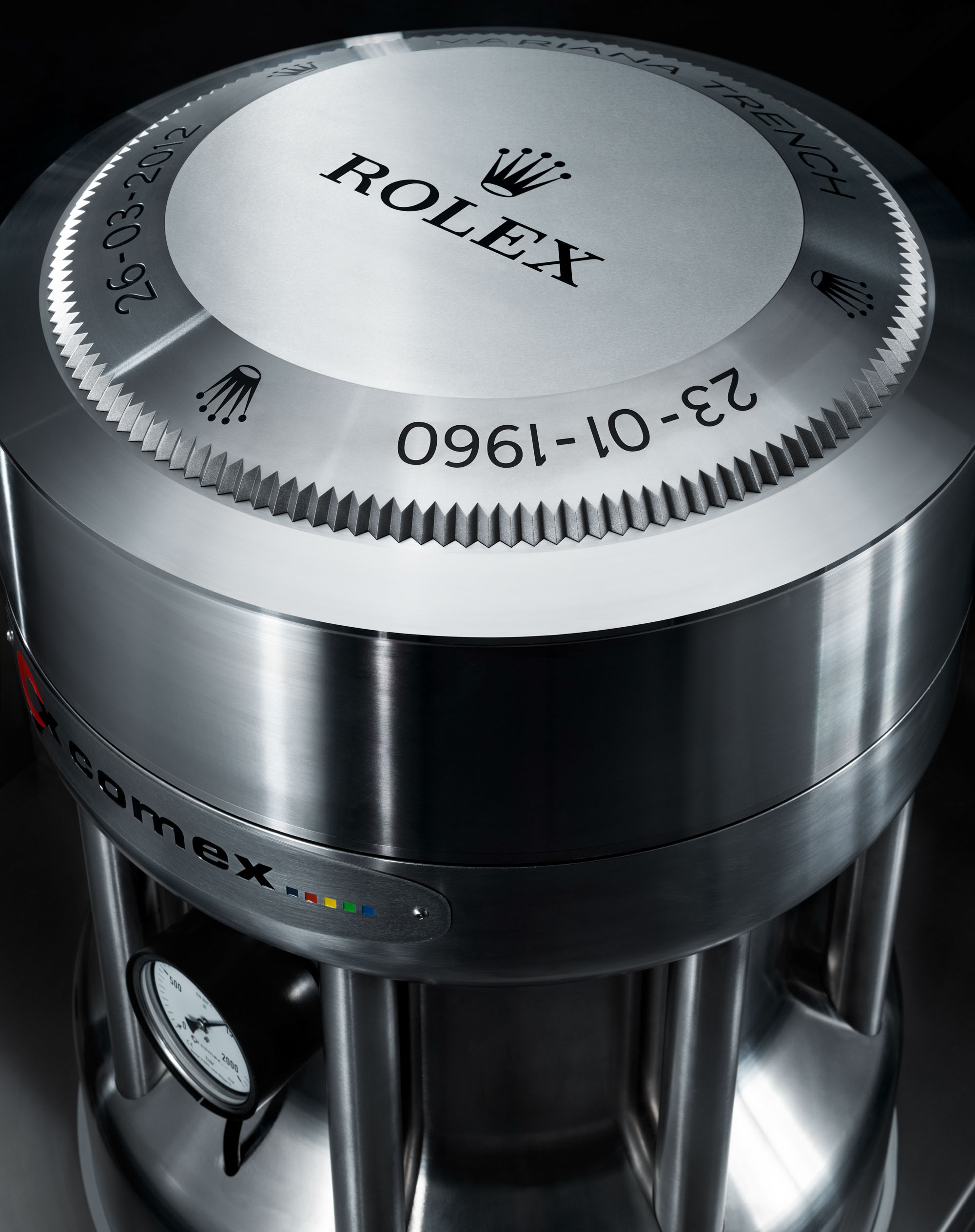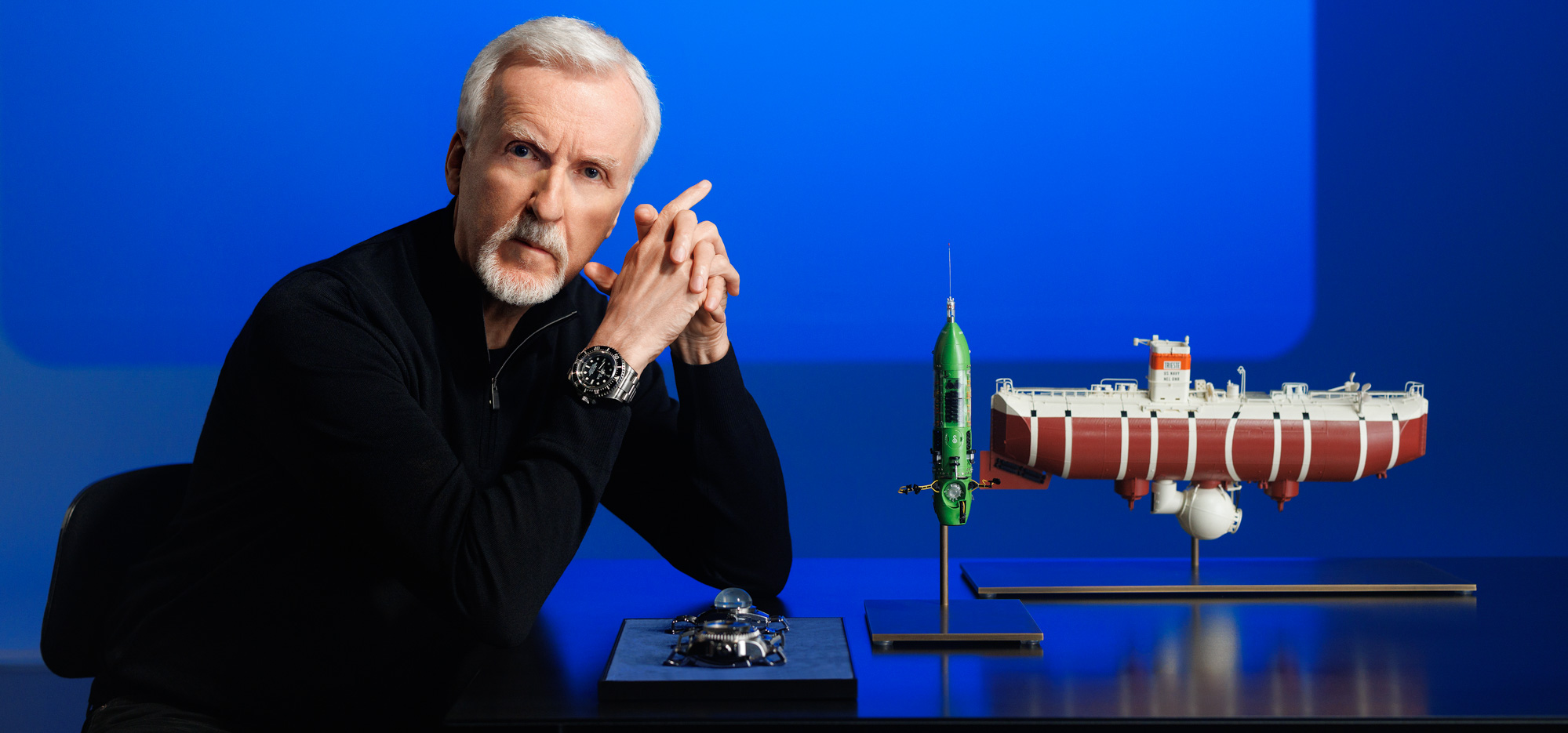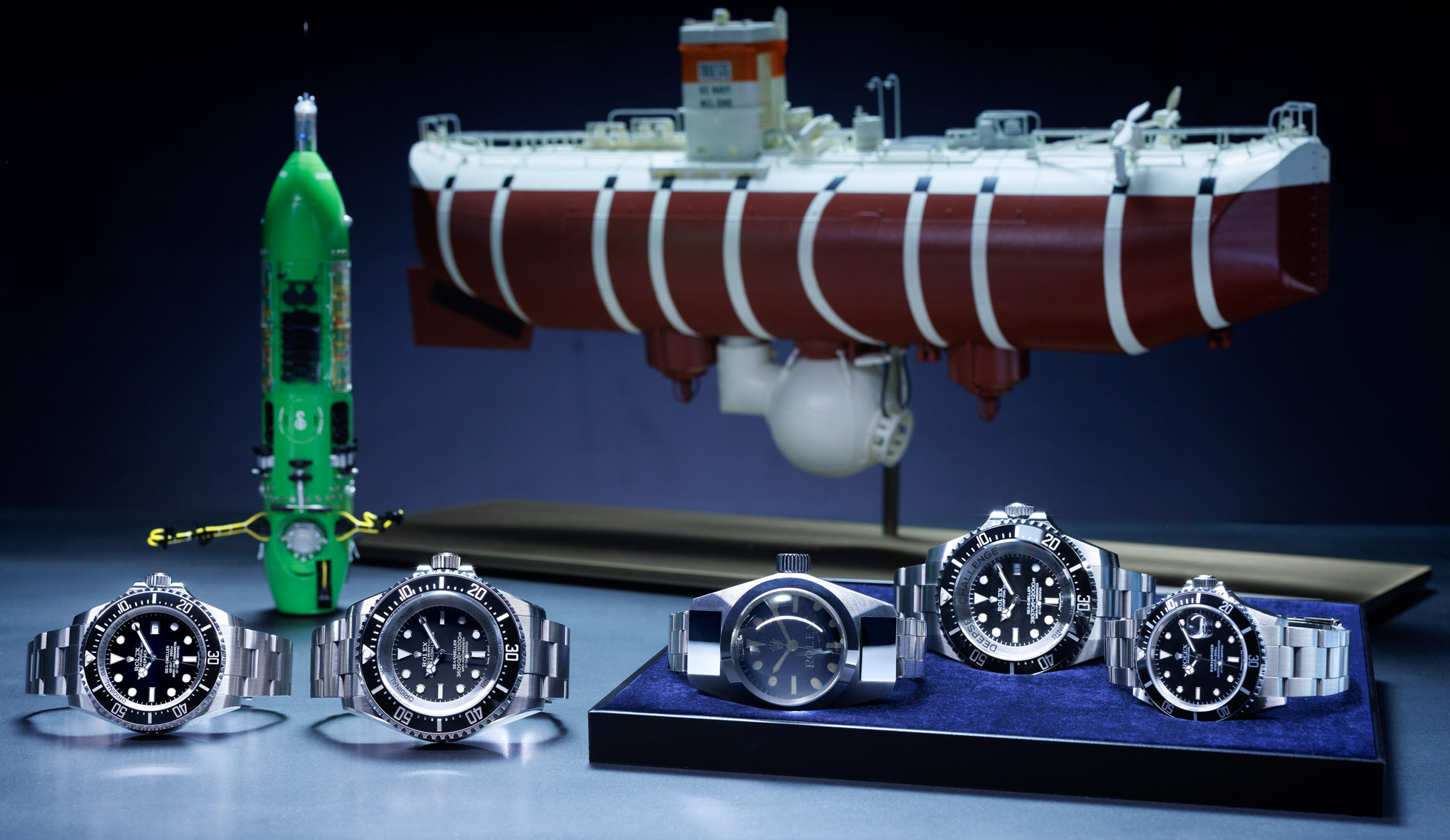 Waterproof to 11,000 meters or 36,090 feet, the new Rolex Deepsea Challenge, or Rolex Oyster Perpetual Deepsea Challenge reference 126067 in RLX Titanium is 50mm-wide and goodness knows how thick. Although commercially available at a whopping $26,000, the first all-titanium Rolex watch is interesting for so much more than its borderline unwearable, albeit impressive specs.
Waterproof to 11,000 meters or 36,090 feet, the new Rolex Deepsea Challenge, or Rolex Oyster Perpetual Deepsea Challenge reference 126067 in RLX Titanium is 50mm-wide and goodness knows how thick. Although commercially available at a whopping $26,000, the first all-titanium Rolex watch is interesting for so much more than its borderline unwearable, albeit impressive specs.
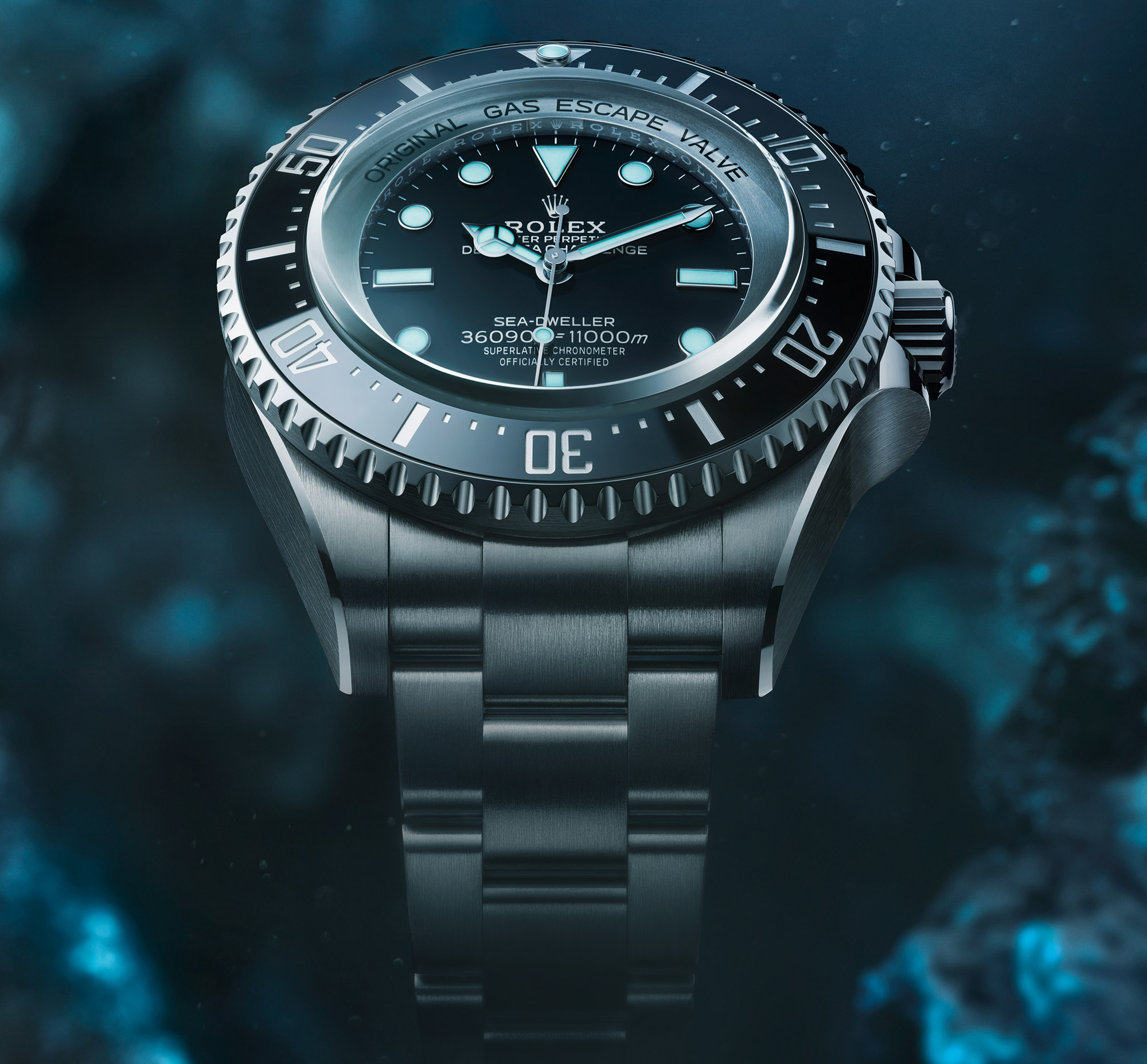
Here’s what’s happening with the launch of the 2022 Rolex Deepsea Challenge watch. In typical Rolex fashion, we are seeing Rolex do another soft launch, a careful introduction of a new-for-Rolex engineering feat. We have seen this happen with Cerachrom ceramic bezels in the mid-aughts, with the completely overhauled 32-series of new-generation movements, and we are seeing it today with RLX Titanium. Diehard Rolex fans will know that Rolex has used RLX Titanium before, on the regular Rolex Deepsea that had a 44mm-wide stainless steel case with an RLX Titanium caseback. Unlike today, Rolex didn’t make too much fuss about the material then.
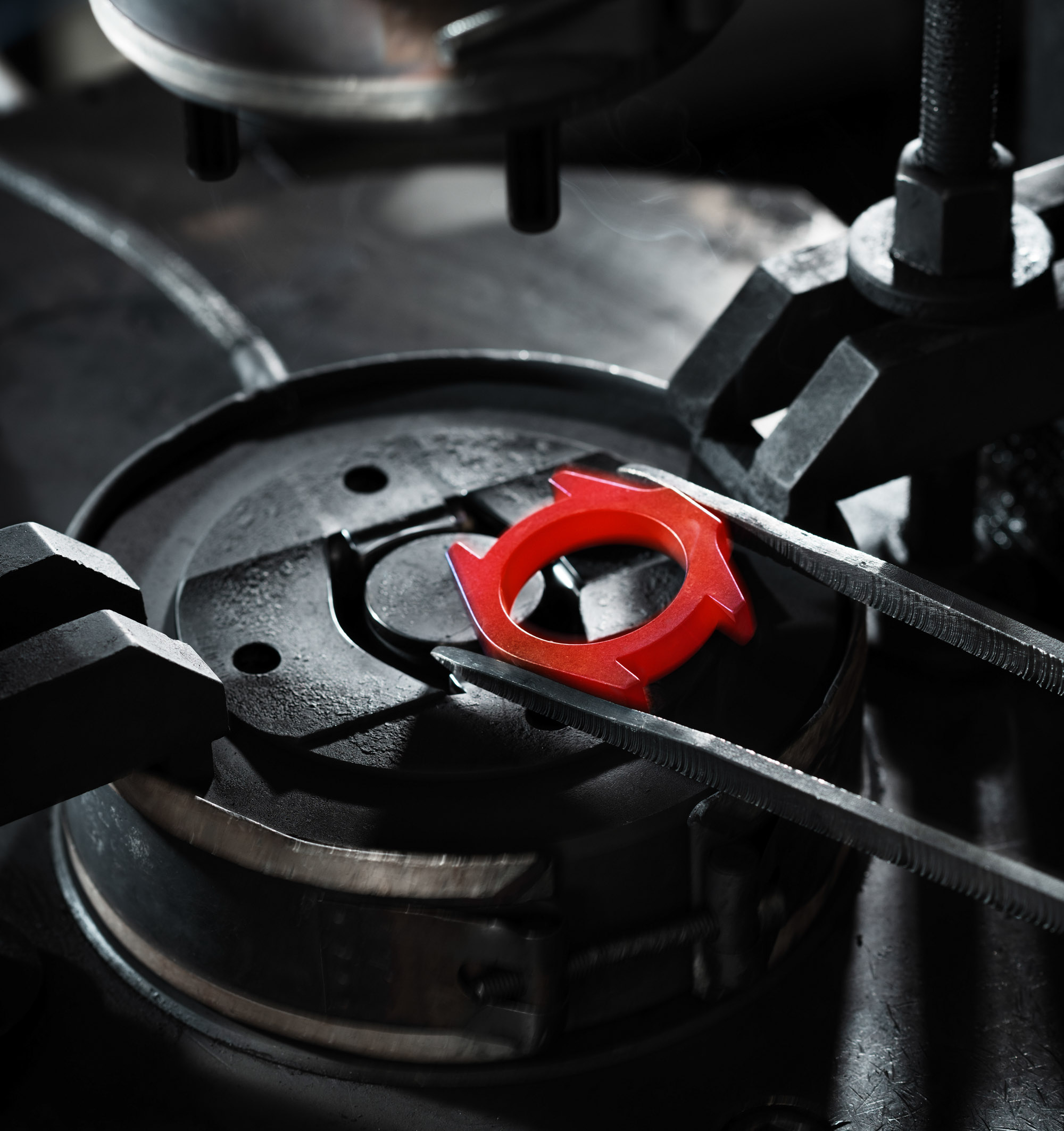 In a nutshell, Rolex chose an extremely low-production model to launch its first completely titanium-clad watch with an Oyster monoblock middle case, bezel, caseback, winding crown, bracelet, and clasp all crafted from lightweight RLX Titanium. This is to test the waters, literally, as we’ll see soon enough, and to carefully scale up production, learning throughout the process about any issues that may arise through the stamping, milling, polishing, and assembly phases of a proper production that exceeds the limitations of prototyping, as well as through customer feedback, once that becomes available. Judging from what we have seen with Cerachrom and Syloxi, it is safe to say that Rolex will take its sweet time before producing a more mainstream model such as Sea-Dweller, Submariner, or Daytona in RLX Titanium. But the new-for-2022 Rolex Deepsea Challenge watch is definitely a start.
In a nutshell, Rolex chose an extremely low-production model to launch its first completely titanium-clad watch with an Oyster monoblock middle case, bezel, caseback, winding crown, bracelet, and clasp all crafted from lightweight RLX Titanium. This is to test the waters, literally, as we’ll see soon enough, and to carefully scale up production, learning throughout the process about any issues that may arise through the stamping, milling, polishing, and assembly phases of a proper production that exceeds the limitations of prototyping, as well as through customer feedback, once that becomes available. Judging from what we have seen with Cerachrom and Syloxi, it is safe to say that Rolex will take its sweet time before producing a more mainstream model such as Sea-Dweller, Submariner, or Daytona in RLX Titanium. But the new-for-2022 Rolex Deepsea Challenge watch is definitely a start.
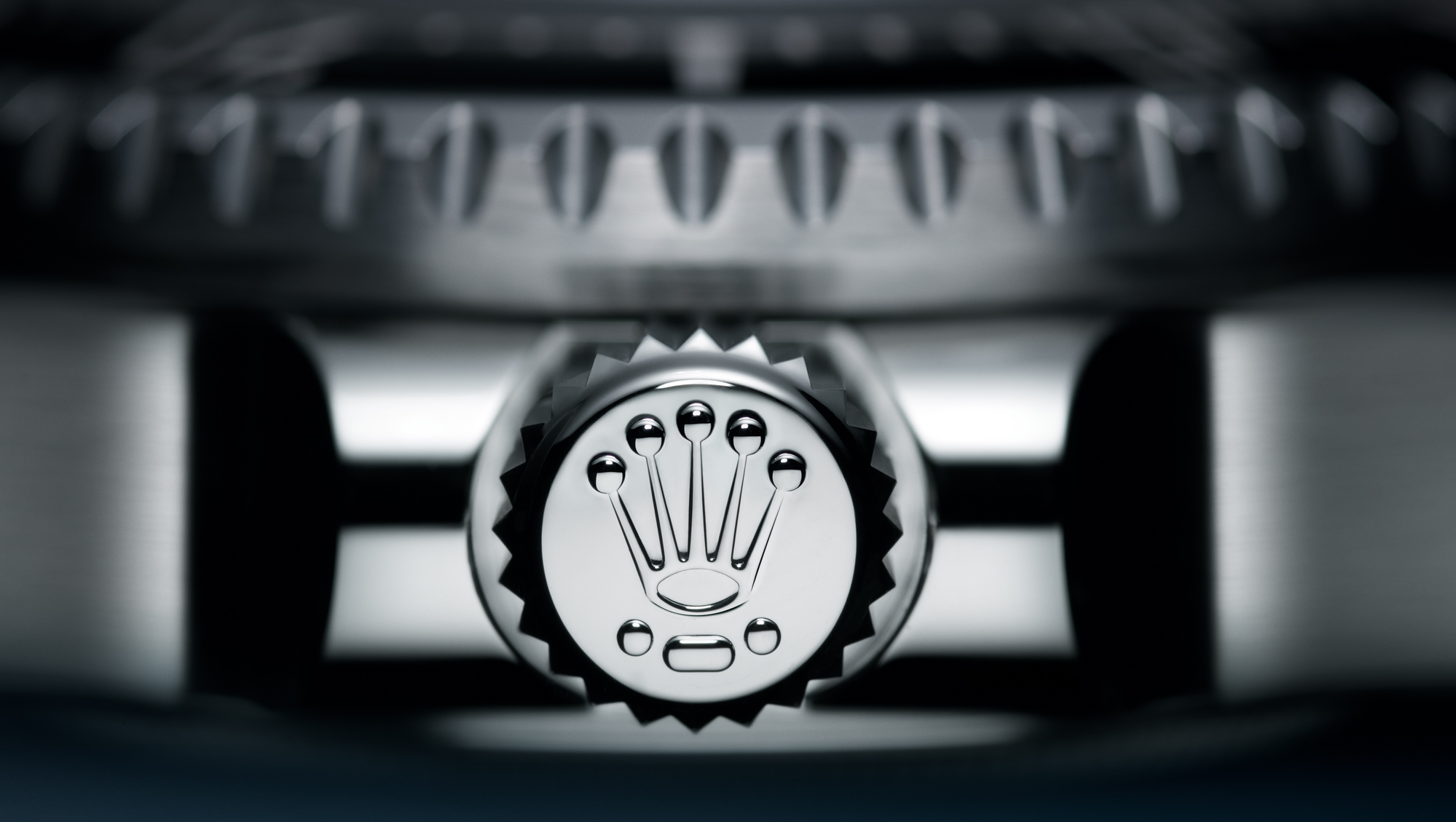
Dot-dash-dot, the three markings indicating that the winding crown of the Oyster Perpetual Deepsea Challenge is made of RLX titanium.
As it has done with Oystersteel, Everose gold, Cerachrom, and Syloxi, as well as a host of other engineering feats, Rolex has chosen to walk its own path and give a trademarked name to a material the likes of which is already in use by others in the watch industry. Rather than simply calling it “grade 5 titanium,” this hints at the unique nature of the material itself. Rolex admits to choosing grade 5 titanium — as it admits it uses the 904L alloy of stainless steel — and clarifies that it’s picked this variation of titanium for its lightness and resistance to deformation and corrosion. Rolex says that the new Deepsea Challenge is 30% lighter than the experimental watch crafted from 904L steel to accompany James Cameron in the Mariana Trench. As such, we can expect Rolex watches made from RLX Titanium to be around 30% lighter than their Oystersteel alternatives — once they become available. Although individual preferences with regard to the weight of a watch will vary, everyone who’s ever held or worn a titanium watch will know that its difference in wearability and overall wearing experience is easily and immediately noticeable, for better or worse.
 According to Rolex, its first all-titanium watch has “a particularly visible grain in the satin finish on the bracelet and middle case — with the exception of the crown guard. In order to highlight the curved profile of the lugs, the top edges have been chamfered and polished.” The chamfered edge has become a rare feat on modern Rolex cases, as they have admittedly become increasingly simpler, with flatter case profiles connecting to the lugs with sharper and direct edges. Perhaps the larger proportions and the expectedly low production run have given Rolex the confidence to reintroduce this labor-intensive detail that has sadly been missing from its more popular models.
According to Rolex, its first all-titanium watch has “a particularly visible grain in the satin finish on the bracelet and middle case — with the exception of the crown guard. In order to highlight the curved profile of the lugs, the top edges have been chamfered and polished.” The chamfered edge has become a rare feat on modern Rolex cases, as they have admittedly become increasingly simpler, with flatter case profiles connecting to the lugs with sharper and direct edges. Perhaps the larger proportions and the expectedly low production run have given Rolex the confidence to reintroduce this labor-intensive detail that has sadly been missing from its more popular models.
 Rolex goes so far as to say, “From the production of the case to that of the bracelet, each element of this 50mm watch has been crafted with everyday use in mind” — an uncharacteristically odd statement from Rolex. Sure, it’s going to be light (or at least lighter than another incredibly massive watch crafted from solid steel all the way around), but the concept of everyday wearability goes out the window with the 50mm diameter and 23mm thickness — the latter almost exactly twice that of a Daytona. Watch enthusiasts have exchanged millions of comments and forum posts arguing over the idea of wearing professional dive watches every day, ultimately coming up with the derogatory term “desk diving” for the activity. Folks will draw the line at different levels of waterproofness to go tastefully with everyday wear, anywhere from 50 to 600 meters, but an 11,000-meter dive watch is well and truly overkill for everyday wear.
Rolex goes so far as to say, “From the production of the case to that of the bracelet, each element of this 50mm watch has been crafted with everyday use in mind” — an uncharacteristically odd statement from Rolex. Sure, it’s going to be light (or at least lighter than another incredibly massive watch crafted from solid steel all the way around), but the concept of everyday wearability goes out the window with the 50mm diameter and 23mm thickness — the latter almost exactly twice that of a Daytona. Watch enthusiasts have exchanged millions of comments and forum posts arguing over the idea of wearing professional dive watches every day, ultimately coming up with the derogatory term “desk diving” for the activity. Folks will draw the line at different levels of waterproofness to go tastefully with everyday wear, anywhere from 50 to 600 meters, but an 11,000-meter dive watch is well and truly overkill for everyday wear.
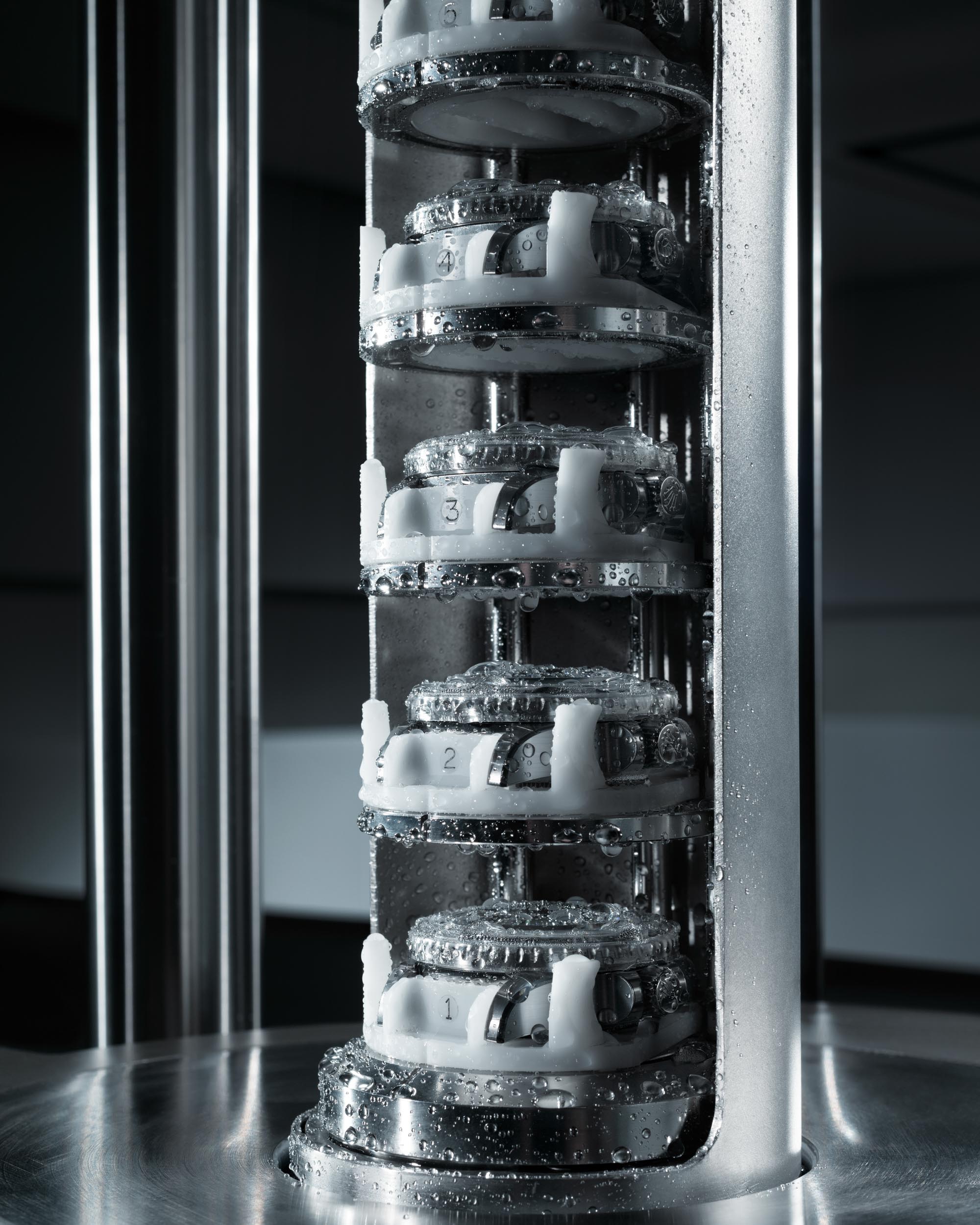
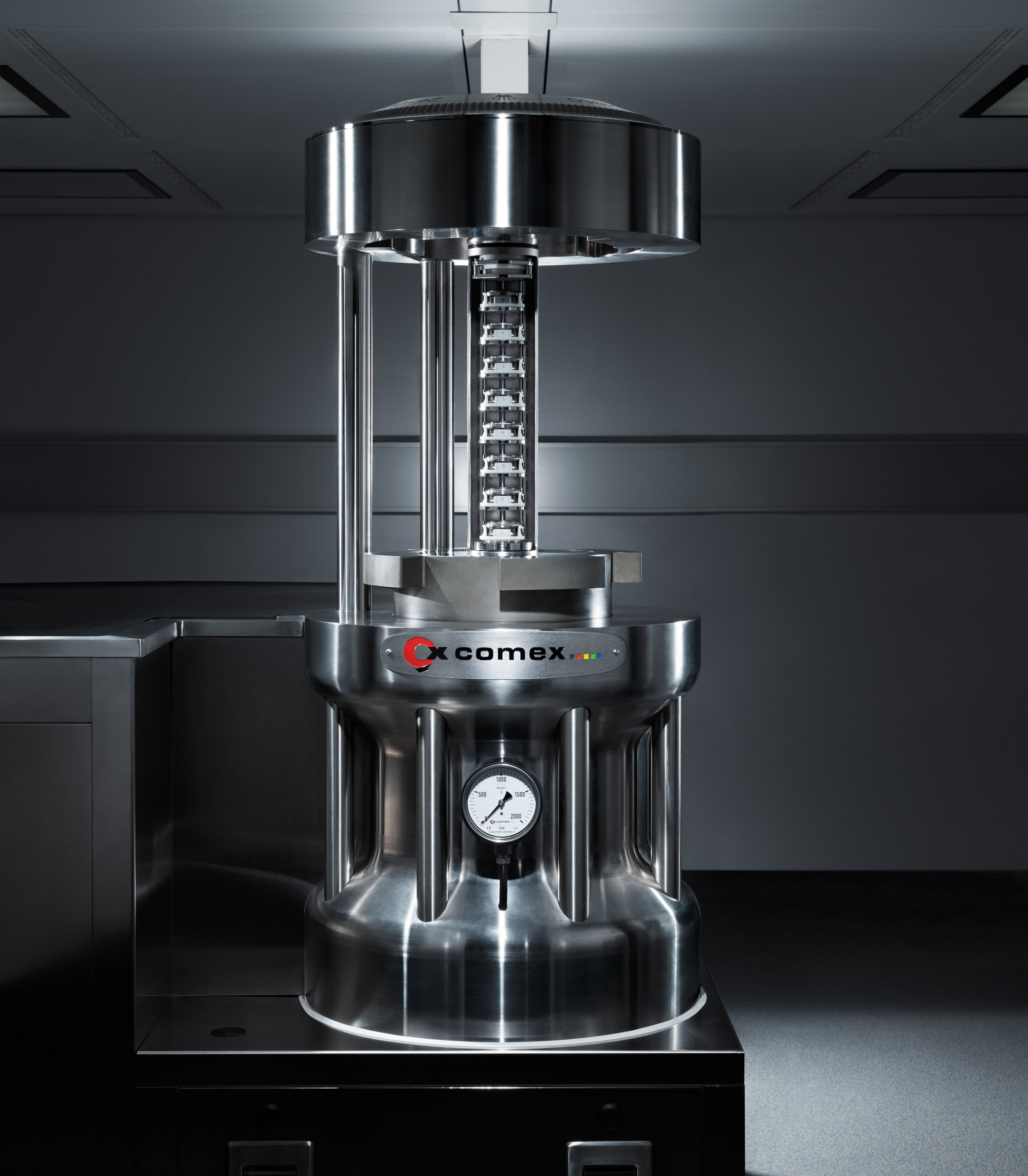 There’s more. Each watch is tested, as required by the standards for diver’s watches, with an additional safety margin of 25%, meaning that the new RLX Titanium Rolex Deepsea Challenge watch is subjected to a pressure equivalent to that exerted by water at a depth of 13,750 meters (45,112 feet), deeper than the deepest spot anywhere on Earth. Rolex worked in partnership with Comex (Compagnie Maritime d’Expertises) to develop an ultra-high-pressure tank to test the waterproofness of the Deepsea Challenge. To support this incredible pressure, the front sapphire crystal is domed and measures 9.5mm-thick, and is coated with anti-reflective coating.
There’s more. Each watch is tested, as required by the standards for diver’s watches, with an additional safety margin of 25%, meaning that the new RLX Titanium Rolex Deepsea Challenge watch is subjected to a pressure equivalent to that exerted by water at a depth of 13,750 meters (45,112 feet), deeper than the deepest spot anywhere on Earth. Rolex worked in partnership with Comex (Compagnie Maritime d’Expertises) to develop an ultra-high-pressure tank to test the waterproofness of the Deepsea Challenge. To support this incredible pressure, the front sapphire crystal is domed and measures 9.5mm-thick, and is coated with anti-reflective coating.
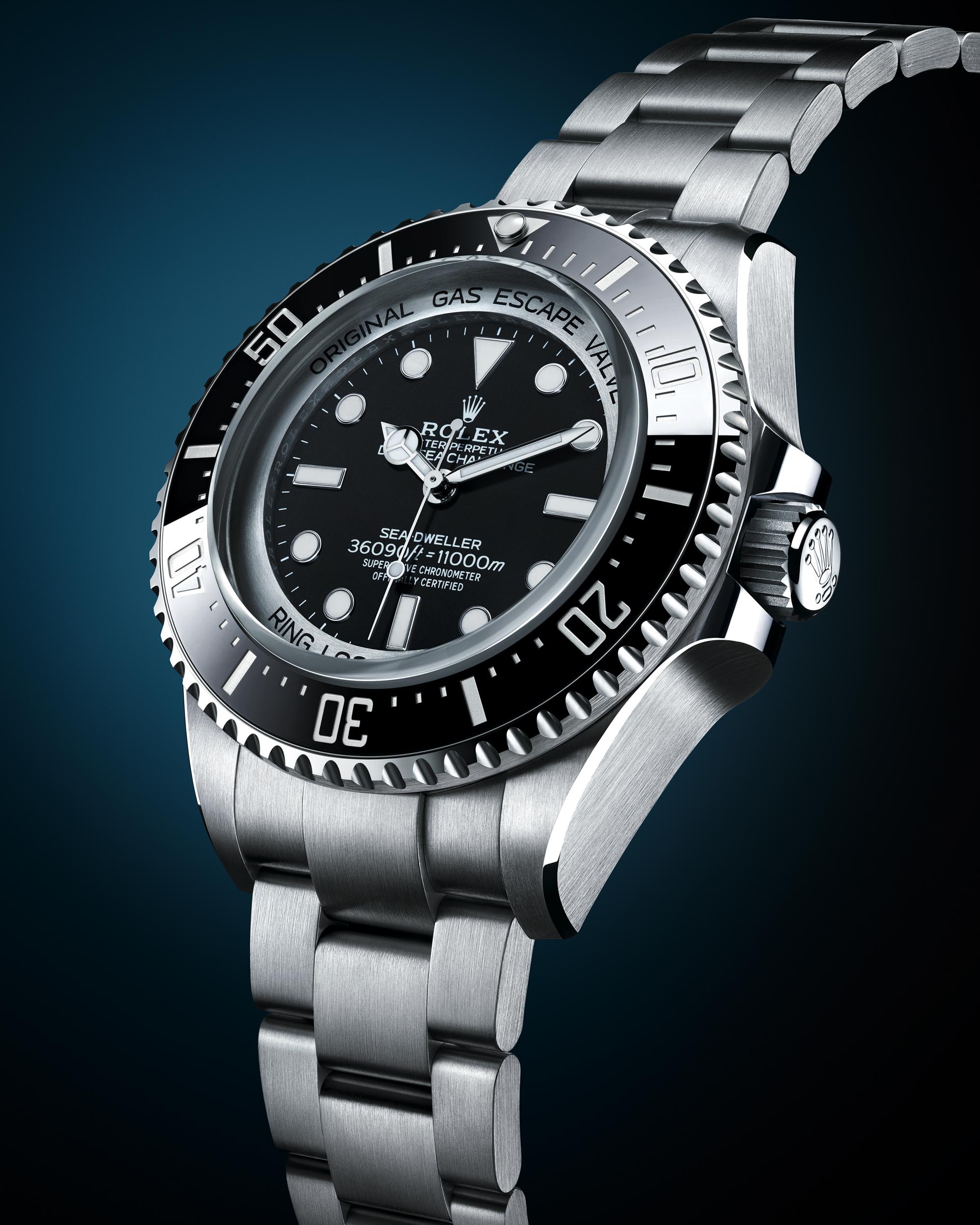 Protected by this mighty exterior is the Rolex Calibre 3230, a no-date, self-winding movement that operates at a frequency of 4Hz with an extended power reserve of around 70 hours. It is, of course, equipped to withstand shocks and impacts: Its hairspring has a Rolex overcoil, and it has a large balance wheel with variable inertia and high-precision Microstella nuts in gold, a traversing balance bridge, and “high-performance” Paraflex shock absorbers. The dial is in “intense black,” in matte, with a fine satin finish. The hour markers and hands are in 18k gold as they are on every Rolex watch and low-light legibility is enhanced with Rolex’s Chromalight display that emits a blue glow.
Protected by this mighty exterior is the Rolex Calibre 3230, a no-date, self-winding movement that operates at a frequency of 4Hz with an extended power reserve of around 70 hours. It is, of course, equipped to withstand shocks and impacts: Its hairspring has a Rolex overcoil, and it has a large balance wheel with variable inertia and high-precision Microstella nuts in gold, a traversing balance bridge, and “high-performance” Paraflex shock absorbers. The dial is in “intense black,” in matte, with a fine satin finish. The hour markers and hands are in 18k gold as they are on every Rolex watch and low-light legibility is enhanced with Rolex’s Chromalight display that emits a blue glow.
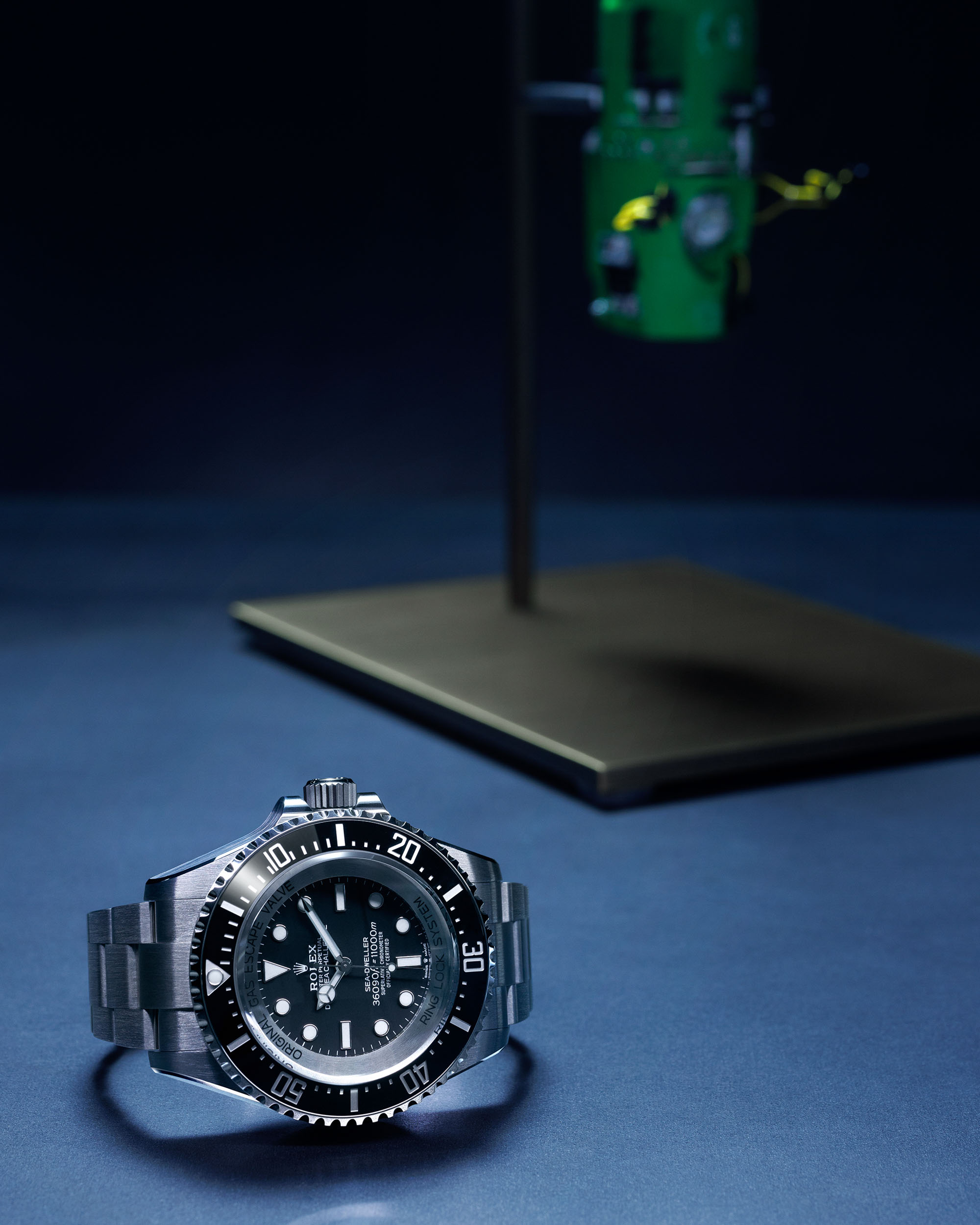
Naturally, the new Rolex Deepsea Challenge comes equipped with a helium escape valve to overcome limitations experienced by divers during saturation dives. In a hyperbaric chamber, watches fill with helium, as the atoms of this gas are present in the mix that the divers breathe. During decompression phases, if helium remains trapped inside the case, it can damage it, potentially shooting the front crystal out, a safety hazard that also renders a dive watch useless immediately. Rolex patented its helium gas escape valve in 1967 to allow for the safe and automatic release of helium from within the case.
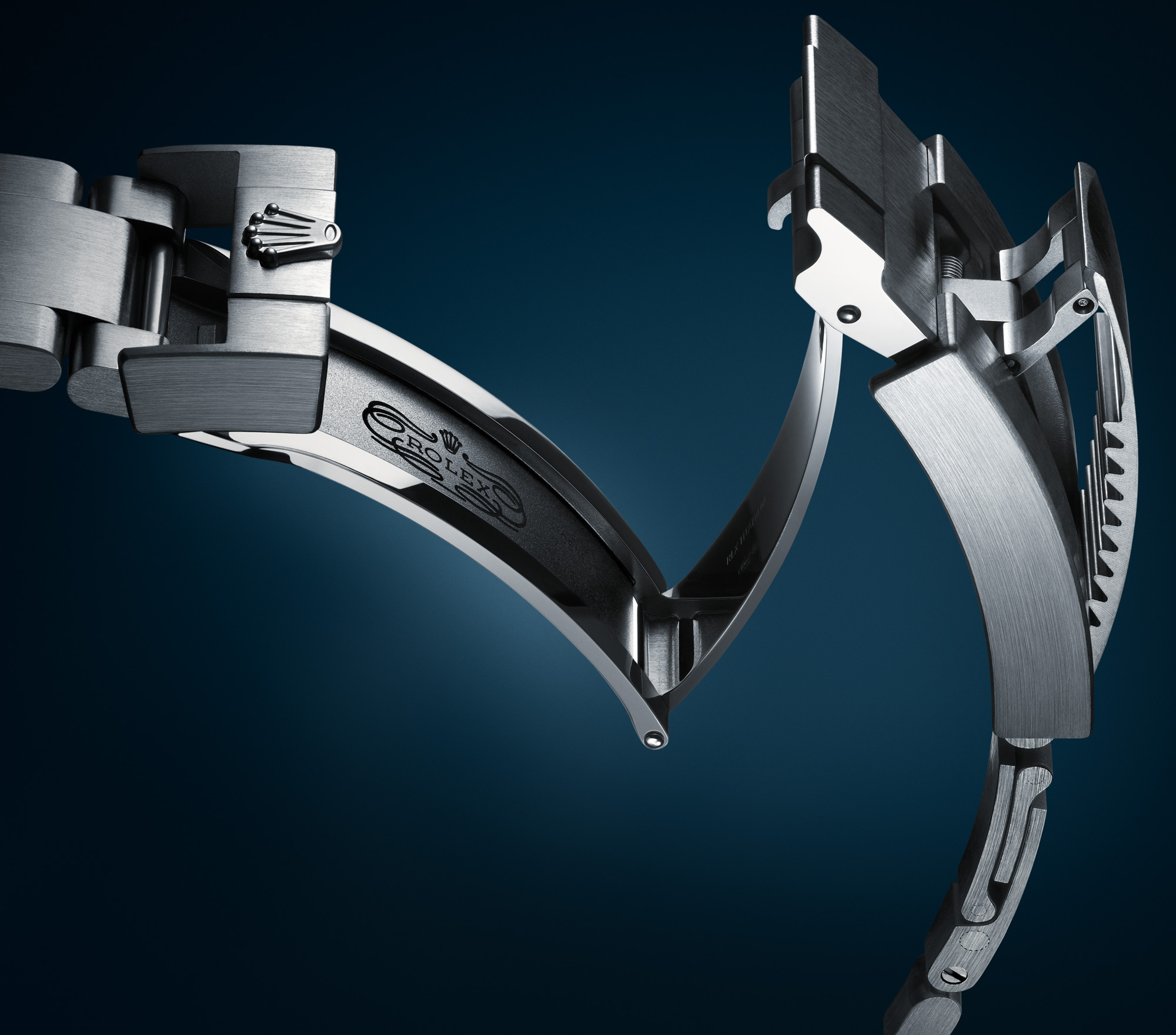
The three-piece Oyster bracelet is assembled from solid RLX Titanium links, along with an Oysterlock folding safety clasp with a built-in Rolex Glidelock extension system that allows for around 20mm of tool-free adjustment in 2mm increments, as well as a Fliplock extension link of around 26mm. To Rolex’s credit, it did design the bracelet and its end links to be rather wide and proportionate to the gargantuan case, which will certainly be a plus in terms of wearability — for those with wrists thick enough to rock a 50mm-wide watch.
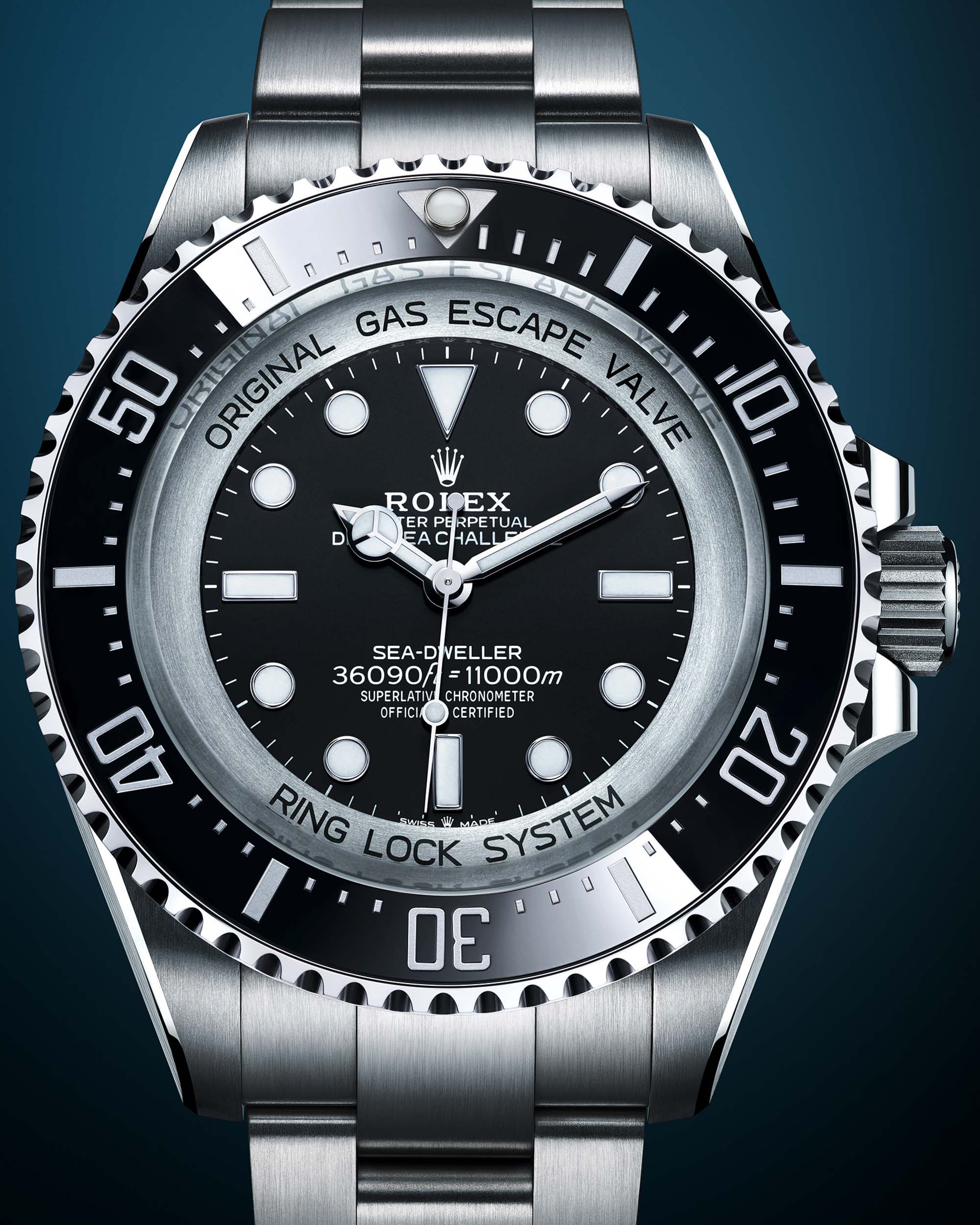
Water resistant to 13,750 meters, the new Rolex Deepsea Challenge is definitely a cool exercise from a brand better known for its mainstream products. That said, the real importance lies not in the performance of this very product but rather in the prospect of the brand finally introducing a completely new material to its established Rolex Professional collections.
The new Rolex Deepsea Challenge 126067 in RLX Titanium is priced at $26,000 and is available from November 2022. You can learn more at the brand’s website.

